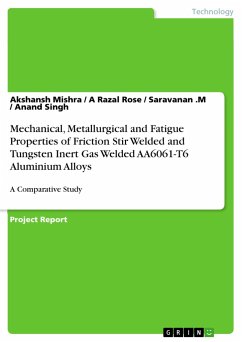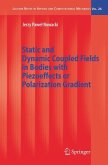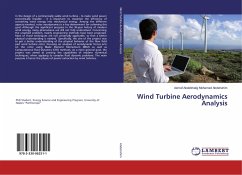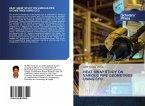Master's Thesis from the year 2013 in the subject Engineering - Mechanical Engineering, grade: 4.06/4.5 GPa, , language: English, abstract: In the wind industry, the current trend is towards building larger and larger turbines. This presents additional structural challenges and requires blade materials that are both lighter and stiffer than the ones presently used. This work is aimed to aid the work of designing new wind turbine blades by providing a comparative study of different composite materials. A coupled Finite-Element-Method (FEM) - Blade Element Momentum (BEM) code was used to simulate the aerodynamic forces subjected on the blade. The developed BEM code was written using LabView allowing an iterative numerical approach solver taking into the consideration the unsteady aerodynamic effects and off -design performance issues such as Tip Loss, Hub Loss and Turbulent Wake State therefore developing a more rational aerodynamic model. For this thesis, the finite element study was conducted on the Static Structural Workbench of ANSYS, as for the geometry of the blade it was imported from a previous study prepared by Cornell University. Confirmation of the performance analysis of the chosen wind turbine blade are presented and discussed blade including the generated power, tip deflection, thrust and tangential force for a steady flow of 8m/s. The elastic and ultimate strength properties were provided by Hallal et al. The Tsai- Hill and Hoffman failure criterions were both conducted to the resulting stresses and shears for each blade composite material structure to determine the presence of static rupture. A progressive fatigue damage model was conducted to simulate the fatigue behavior of laminated composite materials, an algorithm developed by Shokrieh. It is concluded that with respect to a material blade design cycle, the coupling between a finite element package and blade element and momentum code under steady and static conditions can be useful. Especially when an integration between this coupled approach and a dynamic simulation tool could be established, a more advanced flexible blade design can be then analyzed for a novel generation of more flexible wind turbine blades.
Hinweis: Dieser Artikel kann nur an eine deutsche Lieferadresse ausgeliefert werden.
Hinweis: Dieser Artikel kann nur an eine deutsche Lieferadresse ausgeliefert werden.








